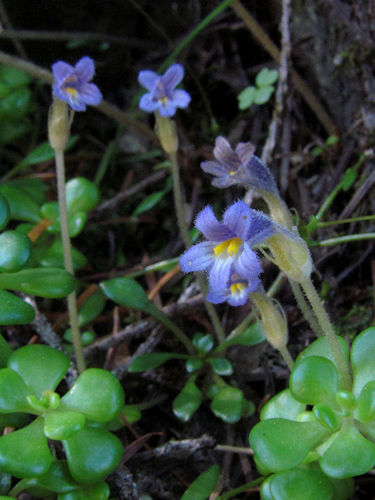365Caws is now in its 16th year of publication. If I am unable to post daily, I hope readers who love the natural world and fiberarts will seize those days to read the older material. Remember that this has been my journey as well, so you may find errors in my identifications of plants. I have tried to correct them as I discover them. Likewise, I have refined fiberarts techniques and have adjusted recipes, so search by tags to find the most current information. And thank you for following me!
Sunday, July 17, 2022
Aphyllon Purpureum
Day 277: This exquisite parasite is one of my favourite wildflowers. It bears a rather unfortunate common name, one which inevitably draws disparaging comments from readers who are unfamiliar with the root words which form it. It is Broomrape. "Broom" refers to legumes (a family which includes Scotch broom, among others) and "rape" comes from Latin "rapum," meaning "a tuber." The name is quite logical when you have the linguistic background since Aphyllon purpureum (formerly Orobanche uniflora) is parasitic on the roots of certain legumes, but in this case, it is associated with sedum (the green succulent foliage in the foreground). The Latin name "Aphyllon" means "without leaves." The parasite has no chlorophyll and therefore is not capable of photosynthesis on its own. It enslaves the sedum as its nutrient-provider, and eventually will kill the host plant. That said, in most instances, the sedum manages to stay ahead of the game by reproducing before it dies, creating a new generation of plants for Aphyllon to parasitize. Team Biota has been monitoring this particular colony for seven or eight years now, and it seems to have achieved a balance between the two species.
Subscribe to:
Post Comments (Atom)

No comments:
Post a Comment